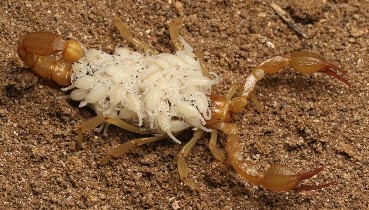
Amazing Nature
14 March 2022 ( 347 views )

Advertisements
The long-tailed broadbill (Psarisomus dalhousiae)
The long-tailed broadbill (Psarisomus dalhousiae) is a species of bird that is found in the Himalayas, extending east through Northeastern India to Southeast Asia. It is the only bird in the genus Psarisomus. The long-tailed broadbill is about 25 cm (10 inches) in length and weighs between 50 and 60 grams. It can be identified by its shrill call.
The long-tailed broadbill displays a yellow plumage on the throat. Blueish-green plumage on the belly, back, and wings. The long-tailed broadbill is a forest bird that lives on insects. It is very sociable and normally travels in large, noisy parties except during the mating season. It builds a pear-shaped nest in a tree. The female usually lays between 5 and 6 eggs that are incubated by both sexes; both sexes also help to feed the young.
Adult long-tailed broadbills have a bright yellow throat and face, where the yellow patch ranges on each side of the occiput. The yellow feathers continue down to a form a thin band around the neck. There is a thin layer of pale-yellow/whitish feathers that envelops the yellow patch below their throat. Some even have a hint of pale yellow-green on their chin. They have a helmet-like black cap with a sleek blue patch on the crown and a smaller blue patch at the back of their neck. The feathers along the back, belly and top of the wings are bright green produced by a combination of pigmentary and structural color. The underparts of the wings are a lighter green or blueish green. The primary feathers are black, with a metallic blue margin at the base of the external web and a white spot on the base of the inner web.
The breeding seasons of the long-tailed broadbill may vary according to location. Populations that live in the Indian Subcontinent breed from March to April, while populations residing in/near Myanmar begin breeding from April. The female will lay between 5 and 6 eggs, which are white and oval shaped. Both sexes incubate and feed the chicks. It is even suggested that Long-tailed broadbills may be cooperative breeders, since more than two individuals have been observed around the nest.
They build a large pear-shaped nest that is attached to the branch of a tall tree The nest has a small 1-2 inch circular entrance on the side of the structure, which is usually protected by a cushion of leaves.The nest is composed of fine roots, dead leaves, creepers, mosses and other stringy vegetable matter. Once the young chicks become independent juveniles, they often disperse and settle in new locations within the habitat range.
Recommended Videos
 Best Bird Photos Of The Year 36071 views
Best Bird Photos Of The Year 36071 views This Fluffy Little Bird Looks Like A Small Dragon33 views
This Fluffy Little Bird Looks Like A Small Dragon33 views-
Advertisements
 Californian Teens Discover Two New Scorpion Species and Are Not Planning to Stop There164 views
Californian Teens Discover Two New Scorpion Species and Are Not Planning to Stop There164 views Very Rare Fossilized Bee in "Jelly" Opal74 views
Very Rare Fossilized Bee in "Jelly" Opal74 views 21 Photos Of Nature Winning The Battle Against Civilization83 views
21 Photos Of Nature Winning The Battle Against Civilization83 views Artist Transforms Driftwood Into Fantastical Sculptures That Look Like Spirits of Nature1284 views
Artist Transforms Driftwood Into Fantastical Sculptures That Look Like Spirits of Nature1284 views 21 Unusual home and garden decorations with old cooking pots675 views
21 Unusual home and garden decorations with old cooking pots675 views The black-and-yellow broadbill (Eurylaimus ochromalus)867 views
The black-and-yellow broadbill (Eurylaimus ochromalus)867 views
Advertisements



